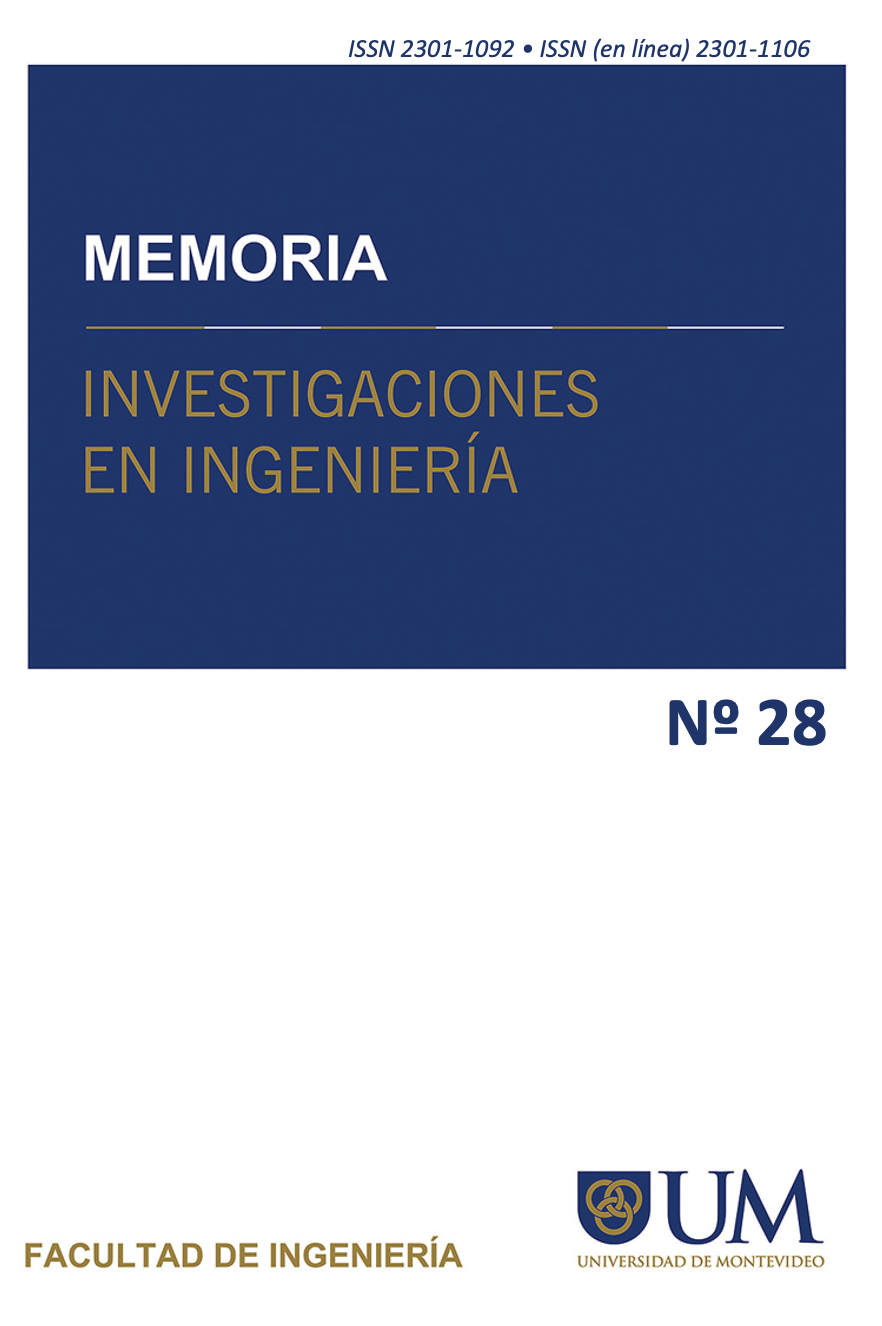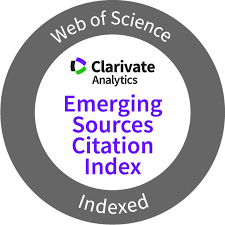Impacto da têmpera pós-soldagem na microestrutura e nas propriedades mecânicas de aços de alta resistência e baixa liga
DOI:
https://doi.org/10.36561/ING.28.5Palavras-chave:
Resistência à tracção, Dureza, Resistência ao impacto, SMAW, Aço de baixa liga de alta resistência, Meios de extinçãoResumo
A soldagem por arco metálico blindado (SMAW) é a técnica de soldagem mais amplamente utilizada nas indústrias de engenharia. Em comparação com outras técnicas de soldagem a arco, como TIG, o SMAW concentra menos calor. No entanto, a soldagem de trabalhos espessos usando SMAW pode resultar em problemas sérios, como distorção estrutural devido à distribuição não uniforme do calor de entrada. Altas tensões e distorções térmicas podem degradar as propriedades mecânicas, semelhante à alta entrada de calor. A rápida remoção de calor pode prevenir tais defeitos, e diferentes meios de têmpera como areia, água e óleo foram usados para investigar variações nas propriedades mecânicas. O aço de alta resistência e baixa liga foi selecionado devido à sua boa soldabilidade e fácil disponibilidade, o que o torna adequado para muitas aplicações industriais, como nas indústrias espacial e de defesa. Os resultados dos testes de tração mostraram que a têmpera em óleo foi superior a outras técnicas de têmpera porque as juntas resfriadas a óleo apresentaram maior resistência à tração e ductilidade. No entanto, as juntas resfriadas a água apresentaram o maior limite de escoamento, mas as juntas temperadas a óleo tiveram a maior eficiência de soldagem. A dureza das juntas resfriadas a água na zona afetada pelo calor e na zona de solda foi maior devido ao rápido resfriamento em água. A energia de impacto das juntas resfriadas a óleo na zona afetada pelo calor foi superior à das outras juntas. No geral, as propriedades mecânicas das juntas resfriadas a óleo foram superiores e apresentaram melhor configuração geométrica, como distorções mínimas.
Downloads
Referências
R.S.Parmar, “Welding engineering and technology”, Published by Khanna Publishers, Delhi, 2005.
Sindo Kou, “Welding metallurgy” second edition, Wiley interscience publication, 2003.
A. Shazad, J. Jadoon, M. Uzair and M. Akhtar, "Effect of composition and microstructure on the rusting of MS Rebars and ultimately their impact on mechanical behavior," Transactions of the Canadian Society for Mechanical Engineering, 2022.
L. Srinivasan, T. Deepan Bharathi Kannan, and P. Sathiya, “Effect of heat input, heat treatment on microstructure and mechanical properties of GTA welded aerospace material 15CDV6”, Journal of materials research, Apr 2017. https://doi.org/10.1557/jmr.2017.70
A. Shazad and M. Uzair, "Effect of quenching medium on the strength and hardness of 15CDV6 steel welded joints produced by argon arc welding," Metallurgy and Heat Treatment of Metals, vol. 11, pp. 45-45, 2024.
A. Shazad, M. Uzair, and M. Tufail, "Influence of multiple post-weld repairs on mechanical and microstructural properties of butt weld joint utilized in structural members," International Journal of Precision Engineering and Manufacturing, pp. 1-8, 2024.
P. N. Kumar, Y. Bhaskar, P. Mastanaiah, and C. V. S. Murthy, "Study on dissimilar metals welding of 15CDV6 and SAE 4130 steels by inter pulse gas tungsten arc welding," Procedia Materials Science, vol. 5, pp. 2382-2391, 2014.
M. C. Sekhar, D. S. Rao, and D. Ramesh, "Welding development in ESR modified 15CDV6 material," International Journal of Mechanical Engineering and Robotic Research, vol. 3, pp. 499-504, 2014
S Sapthagiri, K Jayathirtha Rao, K Ashok Reddy & C Sharada Prabhakar, “Comparison of Mechanical Properties on 15CDV6 Steel Plates by TIG- Welding with and without copper coated filler wires” International Journal of Advanced Research Foundation, www.ijarf.com, Volume 2, Issue 5, May 2015.
Rami Rafea Abdul-Ameer , Saad Hameed Al-Shafaie, Abdul sameea Jasim Jilabi, “ Controlling distortion in gas metal arc high strength low alloy steel welds” Materials Today: Proceedings, June 2021, https://doi.org/10.1016/j.matpr.2021.06.010.
Srivastava S, Garg RK. “Process parameter optimization of gas metal arc welding on IS: 2062 mild steel using response surface methodology” Journal of Manufacturing Process, 2017;25:296–305. https://doi.org/10.1016/j.jmapro.2016.12.016.
Li C, Wang Y, Han T, et al. “Microstructure and toughness of coarse grain heat-affected zone of domestic X70 pipeline steel during inservice welding” Journal of Material Science, 2011;46(3):727–733. https://doi.org/10.1007/s10853-010-4803-y.
Eroglu M, Aksoy M. “Effect of initial grain size on microstructure and toughness of intercritical heat-affected zone of a low carbon steel” Material Science Engineering A. 2000;286(2):289–297. https://doi.org/10.1016/s0921-5093(00)00801-7.
Bijaya Kumar Khamari, Soumya Sobhan Dash, Swapan Kumar Karak, Bibhuti Bhusan Biswal, “Effect of welding parameters on mechanical and microstructural properties of GMAW and SMAW mild steel joints”, iron making and steel making, Sep 2020.
Ruming Geng, Jing Li, Chengbin Shi , Jianguo Zhi, Bin Lu, “Effect of Ce on microstructures, carbides and mechanical properties in simulated coarse-grained heat-affected zone of 800-MPa high-strength low-alloy steel”, Materials Science and Engineering:A, Apr 2022,
A. Narwadkar, and S. Bhosle, “Optimization of MIG welding parameters to control the angular distortion in Fe410WA steel”. Journal of Materials Manufacturing Processes. 2016. vol. 31. Pp. 2158-2164, doi:0.1080/10426914.2015.1127939.
P. Adamczuk, I.G. Machado, J.A. Mazzaferro, “Methodology for predicting the angular distortion in multi-pass butt-joint welding”, Journal of Materials Processing and Technology. 240 (2017) 305–313, https://doi.org/10.1016/j.jmatprotec.2016.10.006.
Wei Liang, Dean Deng, “Investigating the influence of external restraint on welding distortion in thin plate welded structures by means of numerical simulation technology”, Journal of Physics. Conference. Ser. 1063 (2018) 012082, https://doi.org/10.1088/1742-6596/1063/1/012082
A. Shazad, M. Astif, M. Uzair, A. A. Zaidi, “Evaluation of preheating impact on weld residual stresses in AH-36 steel using Finite Element Analysis,” Memoria Investigaciones en Ingenieria 26 (2024) 225–243
M. Anis, W. Winarto, “Effect of plate thickness and weld position on distortion and residual stress of welded structural steel”, Material. Sci. Forum 689 (2011)296–301 https://doi.org/10.4028/www.scientific.net/msf.689.296
M. Islam, A. Buijk, M. Rais-Rohani, K. Motoyama, “Simulation-based numerical optimization of arc welding process for reduced distortion in welded structures”, Finite Element in Analysis and Design. 84 (2014.vol,) 54–64 https://doi.org/10.1016/j.finel.2014.02.003
A. Shazad, M. Uzair, T. Jamil, N. Muhammad, "A Comparative Study on the Joint Hardness and Tensile Properties of Dissimilar Aluminum Alloy using Tungsten Inert Gas (TIG) Welding," in 4th Int. Conf. Key Enabling Technol. (KEYTECH 2024), Atlantis Press, pp. 173-178, Dec. 2024.
Publicado
Como Citar
Edição
Seção
Licença

Este trabalho está licenciado sob uma licença Creative Commons Attribution 4.0 International License.






















